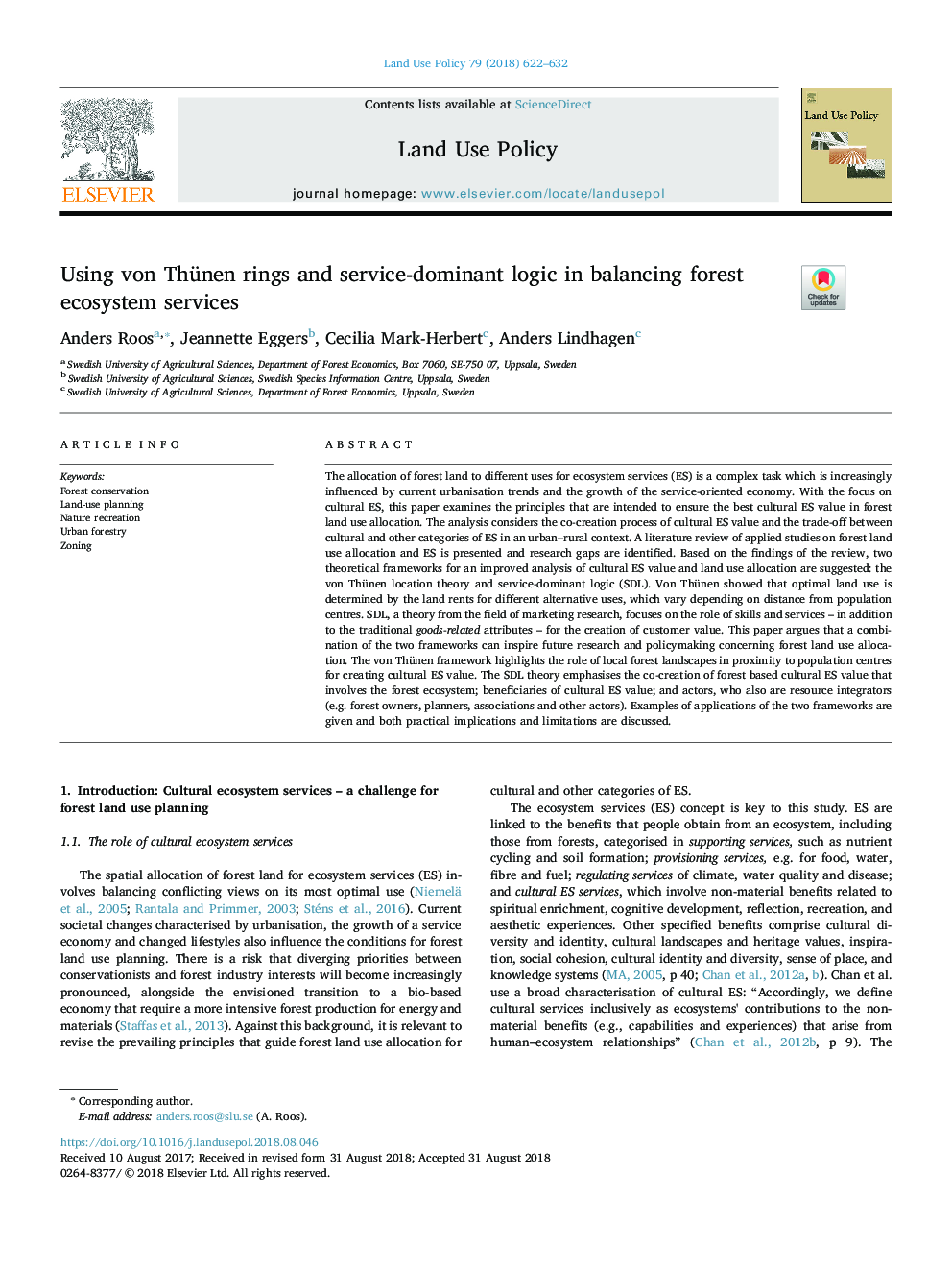| کد مقاله | کد نشریه | سال انتشار | مقاله انگلیسی | نسخه تمام متن |
|---|---|---|---|---|
| 11000099 | 1421804 | 2018 | 11 صفحه PDF | دانلود رایگان |
عنوان انگلیسی مقاله ISI
Using von Thünen rings and service-dominant logic in balancing forest ecosystem services
دانلود مقاله + سفارش ترجمه
دانلود مقاله ISI انگلیسی
رایگان برای ایرانیان
کلمات کلیدی
موضوعات مرتبط
علوم زیستی و بیوفناوری
علوم کشاورزی و بیولوژیک
جنگلداری
پیش نمایش صفحه اول مقاله

چکیده انگلیسی
The allocation of forest land to different uses for ecosystem services (ES) is a complex task which is increasingly influenced by current urbanisation trends and the growth of the service-oriented economy. With the focus on cultural ES, this paper examines the principles that are intended to ensure the best cultural ES value in forest land use allocation. The analysis considers the co-creation process of cultural ES value and the trade-off between cultural and other categories of ES in an urban-rural context. A literature review of applied studies on forest land use allocation and ES is presented and research gaps are identified. Based on the findings of the review, two theoretical frameworks for an improved analysis of cultural ES value and land use allocation are suggested: the von Thünen location theory and service-dominant logic (SDL). Von Thünen showed that optimal land use is determined by the land rents for different alternative uses, which vary depending on distance from population centres. SDL, a theory from the field of marketing research, focuses on the role of skills and services - in addition to the traditional goods-related attributes - for the creation of customer value. This paper argues that a combination of the two frameworks can inspire future research and policymaking concerning forest land use allocation. The von Thünen framework highlights the role of local forest landscapes in proximity to population centres for creating cultural ES value. The SDL theory emphasises the co-creation of forest based cultural ES value that involves the forest ecosystem; beneficiaries of cultural ES value; and actors, who also are resource integrators (e.g. forest owners, planners, associations and other actors). Examples of applications of the two frameworks are given and both practical implications and limitations are discussed.
ناشر
Database: Elsevier - ScienceDirect (ساینس دایرکت)
Journal: Land Use Policy - Volume 79, December 2018, Pages 622-632
Journal: Land Use Policy - Volume 79, December 2018, Pages 622-632
نویسندگان
Anders Roos, Jeannette Eggers, Cecilia Mark-Herbert, Anders Lindhagen,